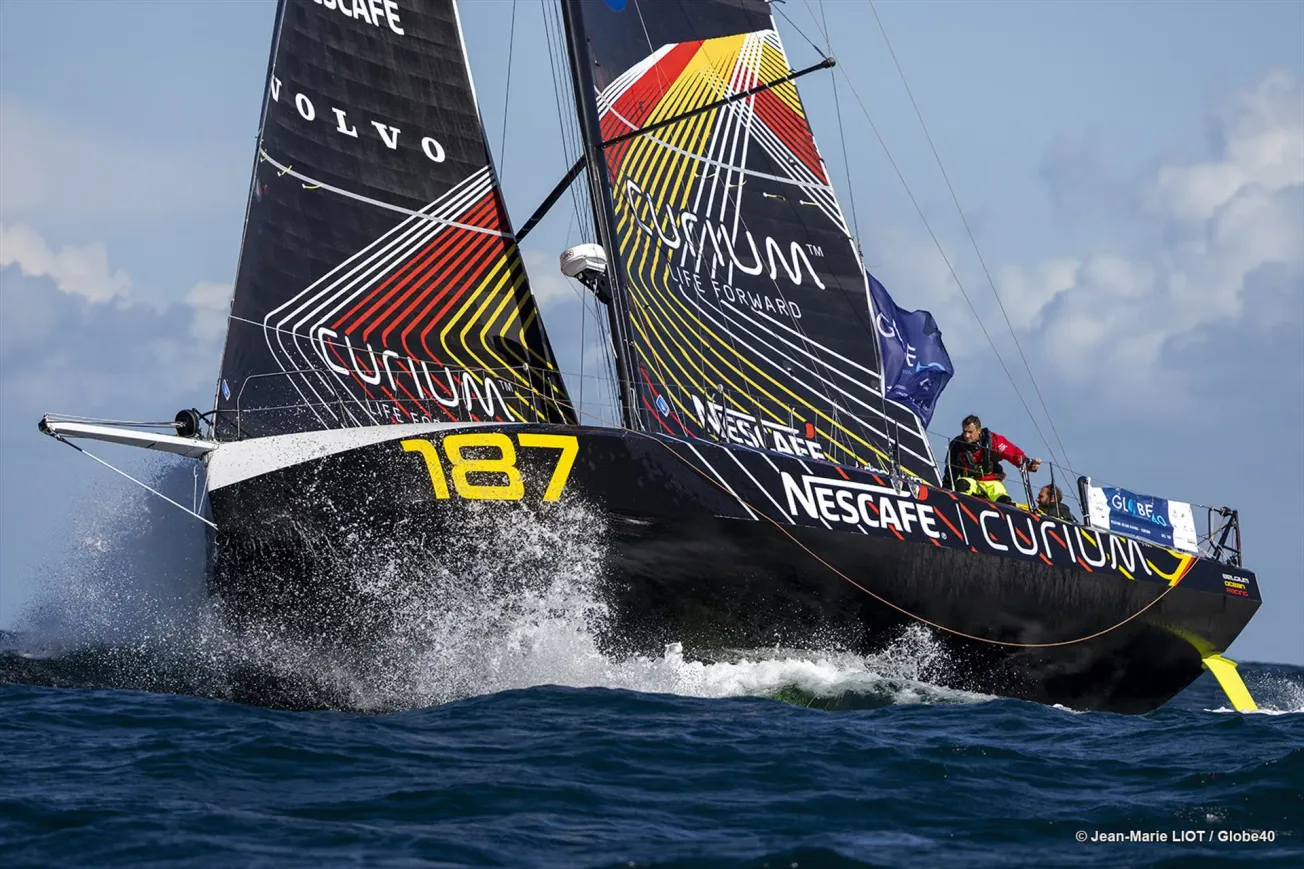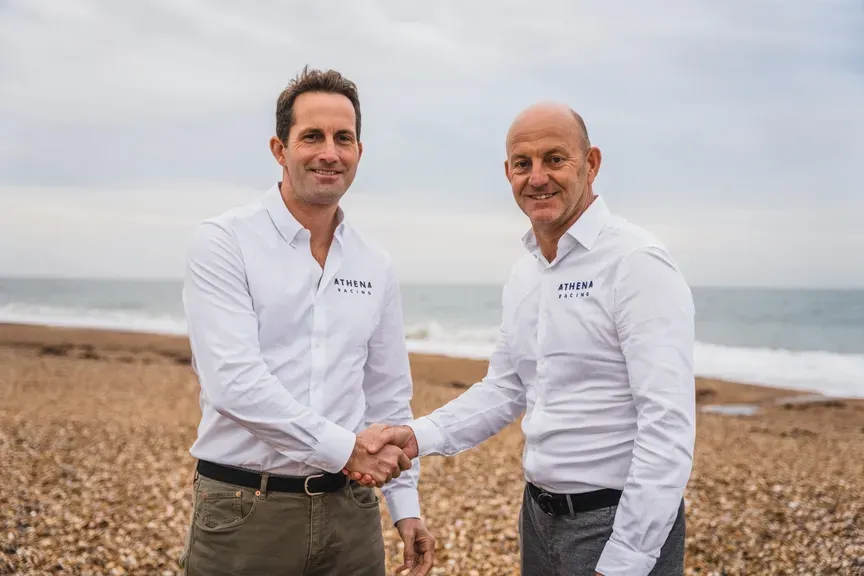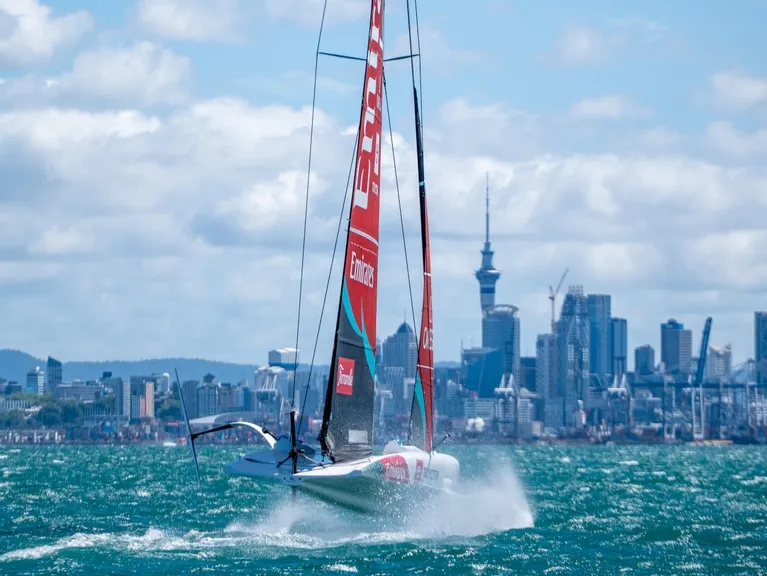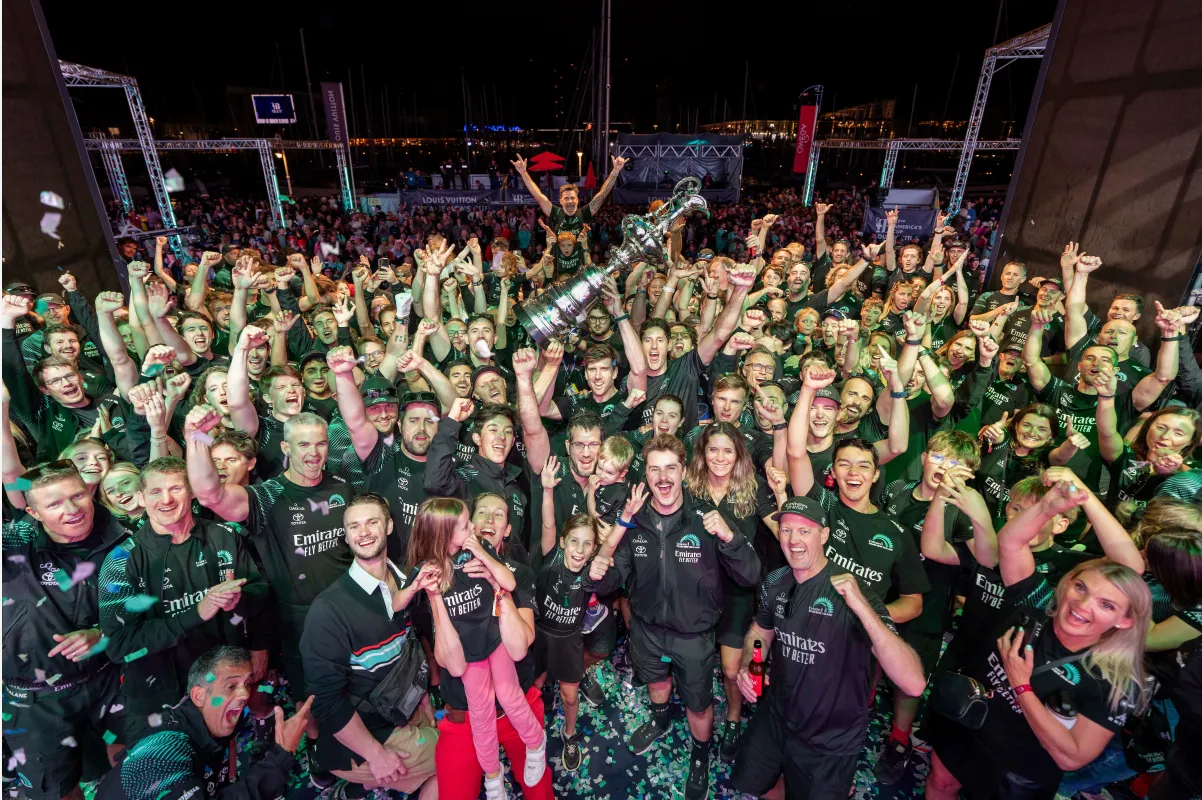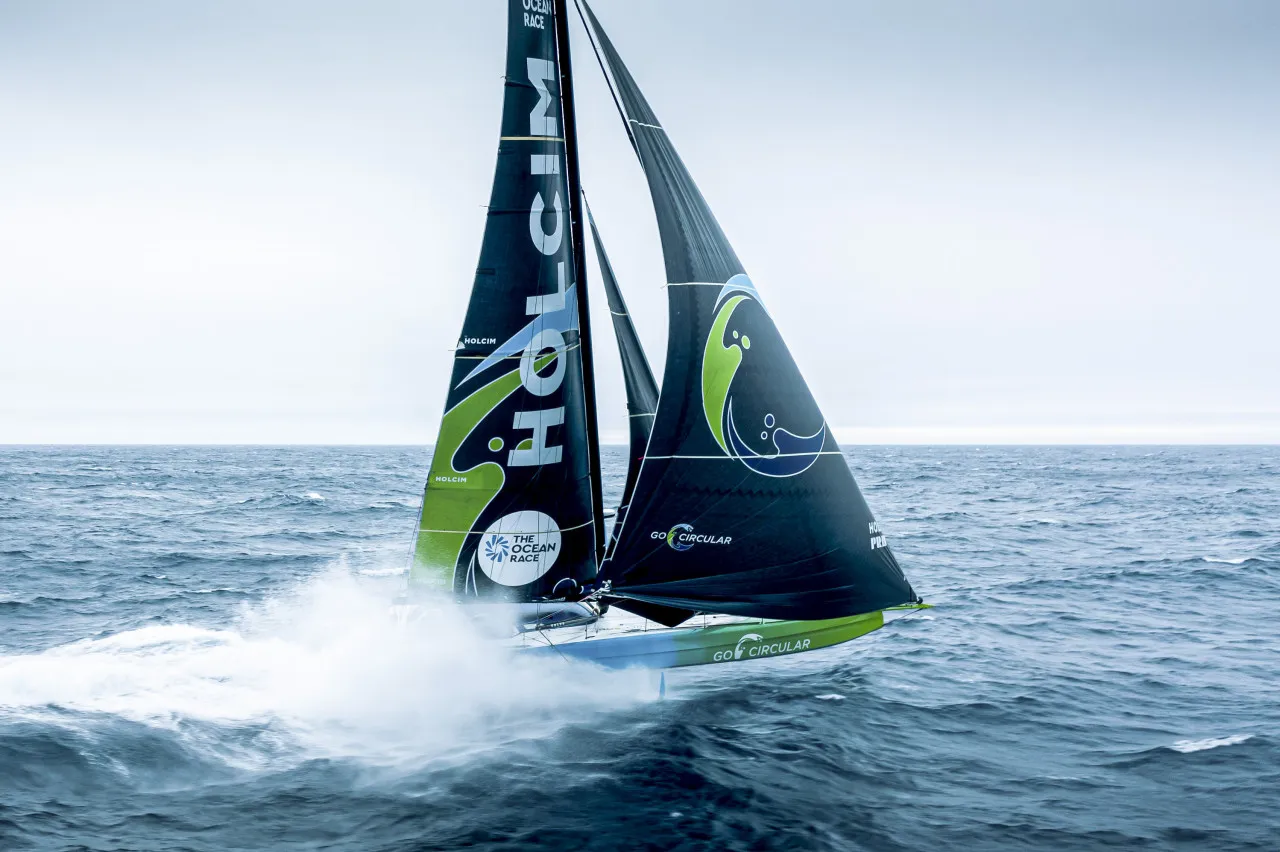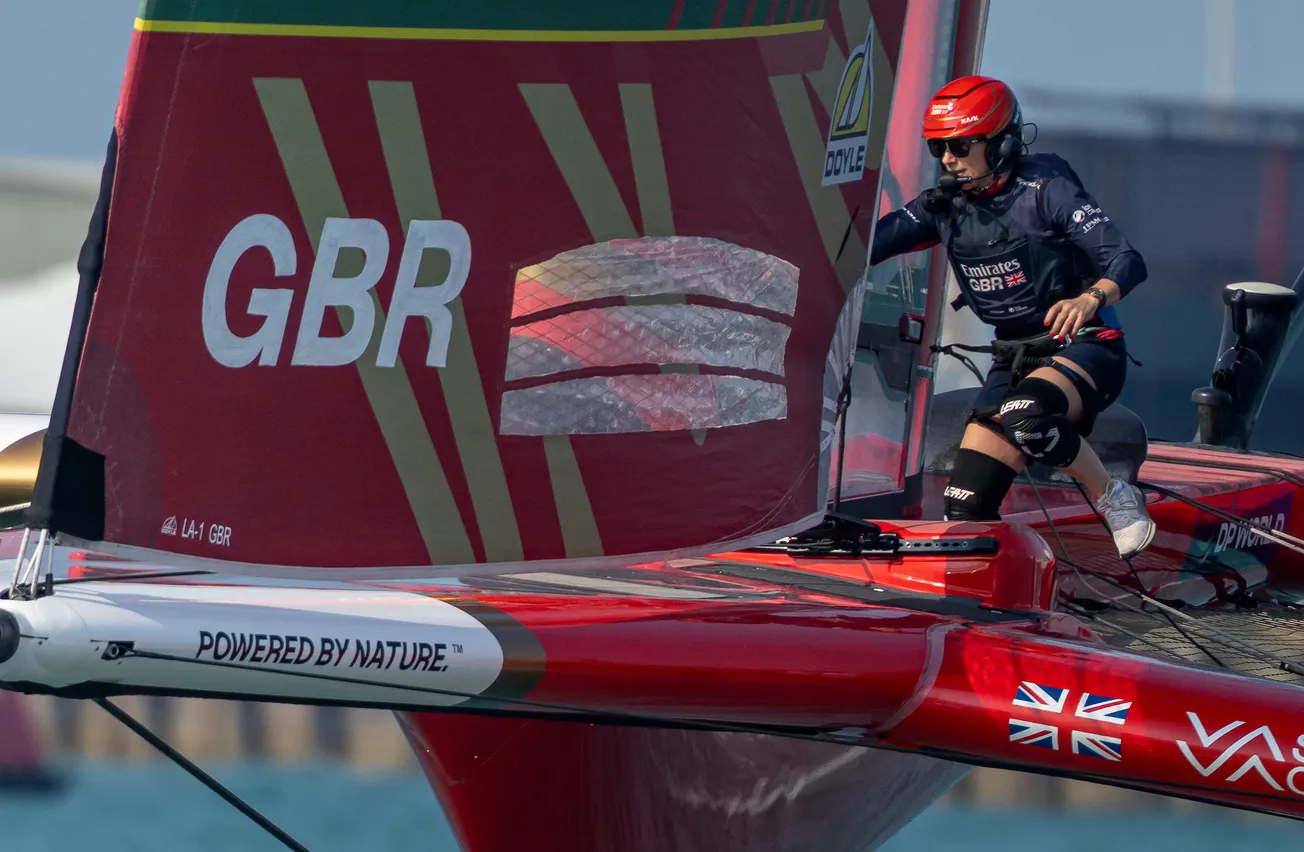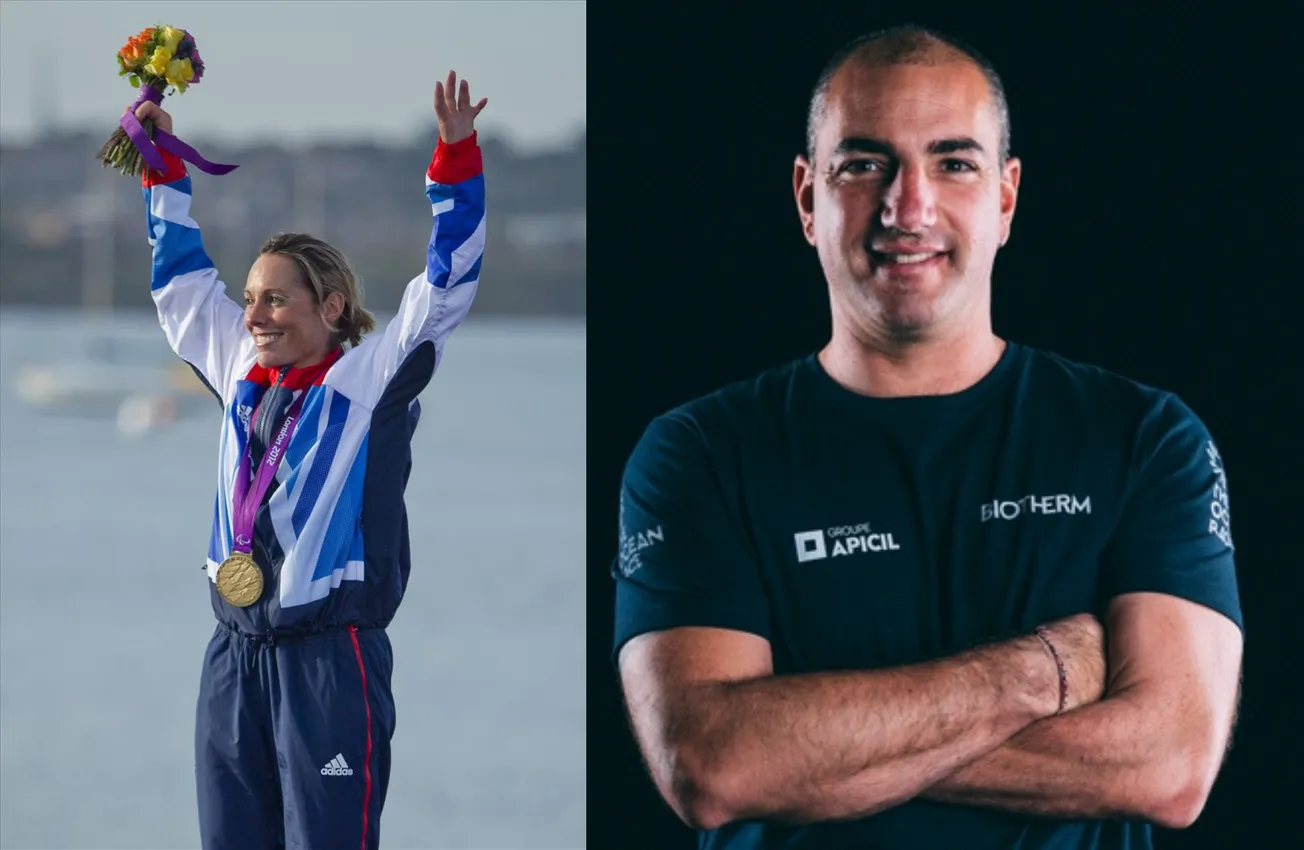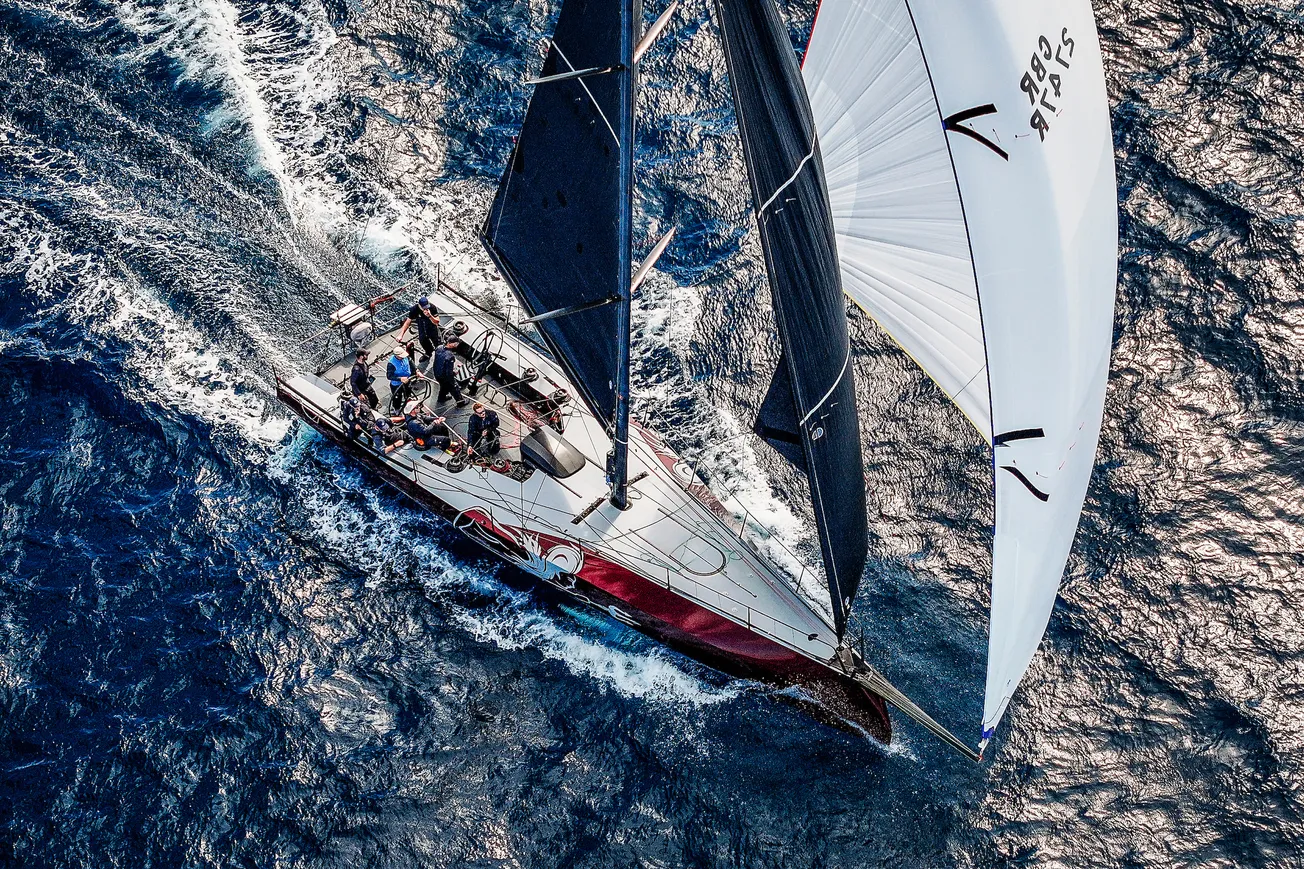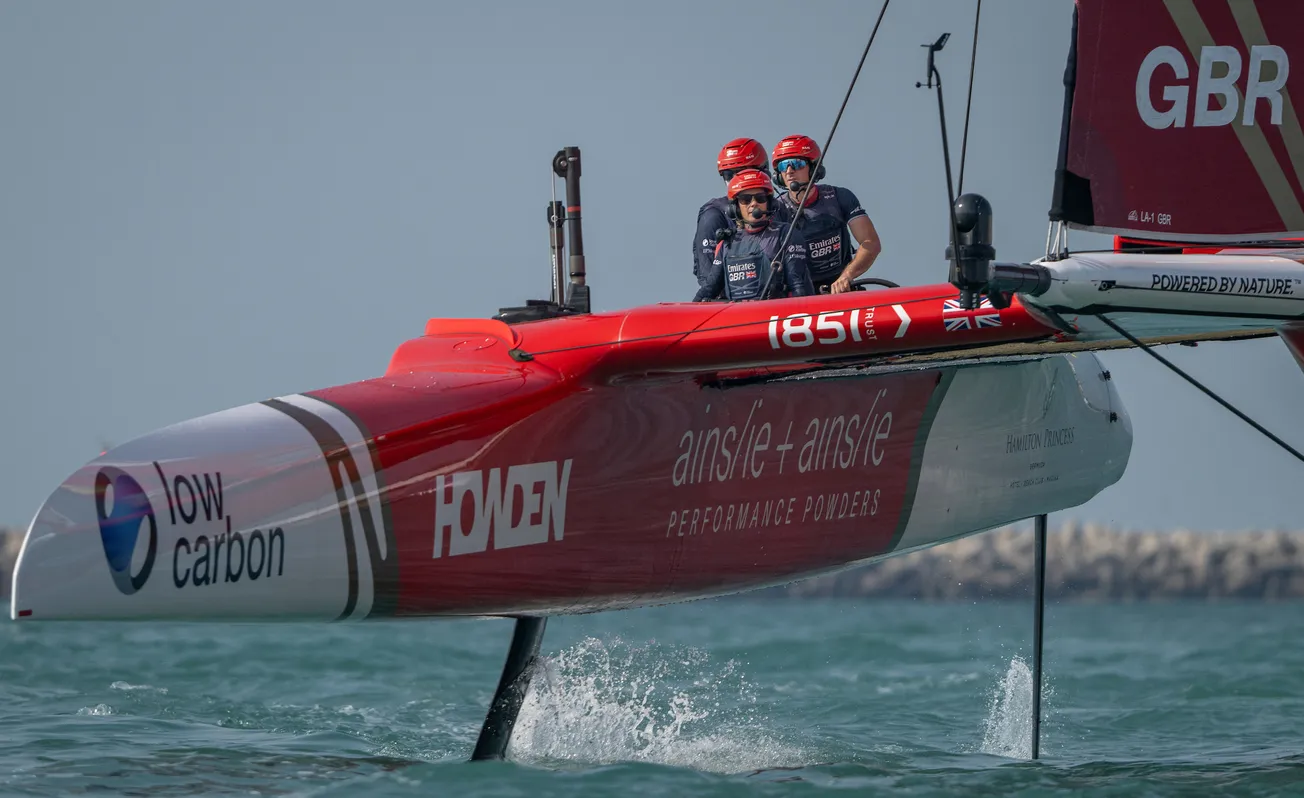Happy Tuesday everyone...
In today's newsletter:
- Podcast: 2025 OK Dinghy World Champion Andrew Mills
- American Magic diversifies operations at its Florida base
- Winning At The Bottom Mark
- The storm that changed sailing
- A lot of boat for the price?
- Transat Café L’OR: Thomas Ruyant of France aims for a three-peat in the IMOCA Class
- Quiz Question...

Podcast: 2025 OK Dinghy World Champion Andrew Mills
Justin Chisholm's guest on the latest episode of the Yacht Racing Life Podcast is British dinghy sailor Andrew Mills, a past Olympic campaigner in the Finn class who recently won the International OK Dinghy World Championship after topping a fleet of 212 boats during a week-long series on Lake Garda, Italy.
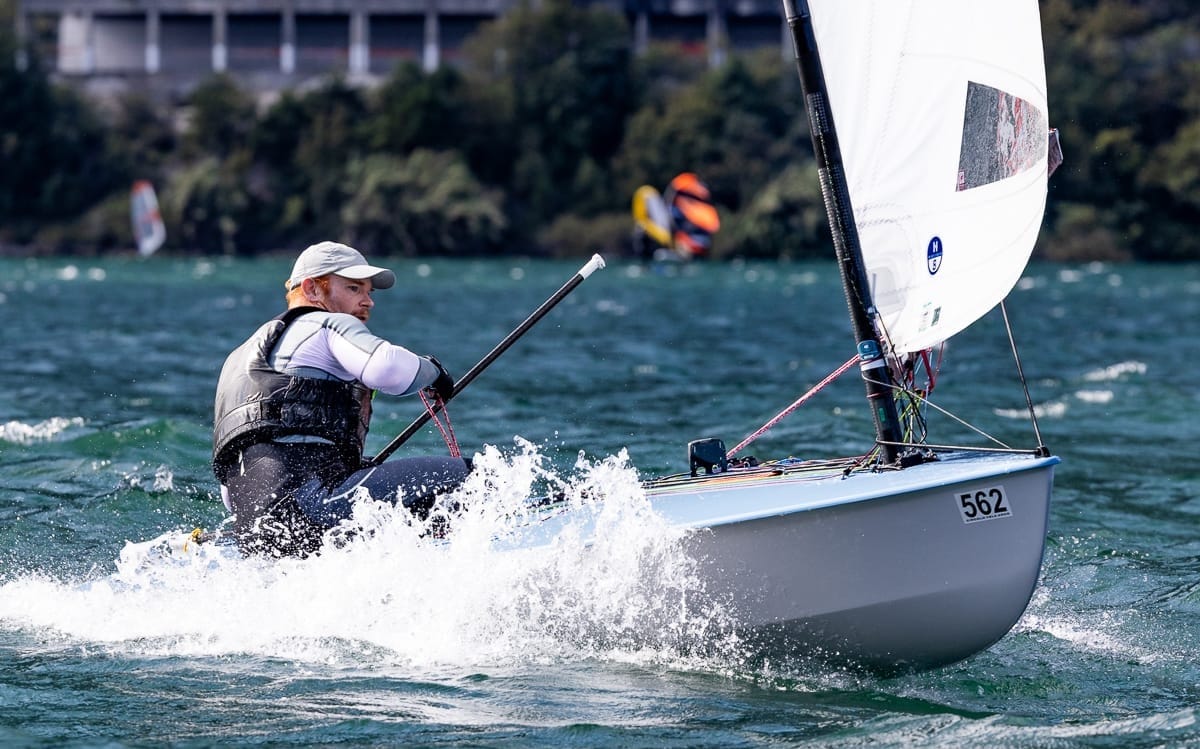
Anyone looking for tips on how to put together a major championship campaign of their own, will find plenty of interest in what is discussed during the interview – and if you are a single handed dinghy sailor you definitely won't want to miss Andrew's generic tips for sailing fast upwind and down.

American Magic diversifies operations at its Florida base
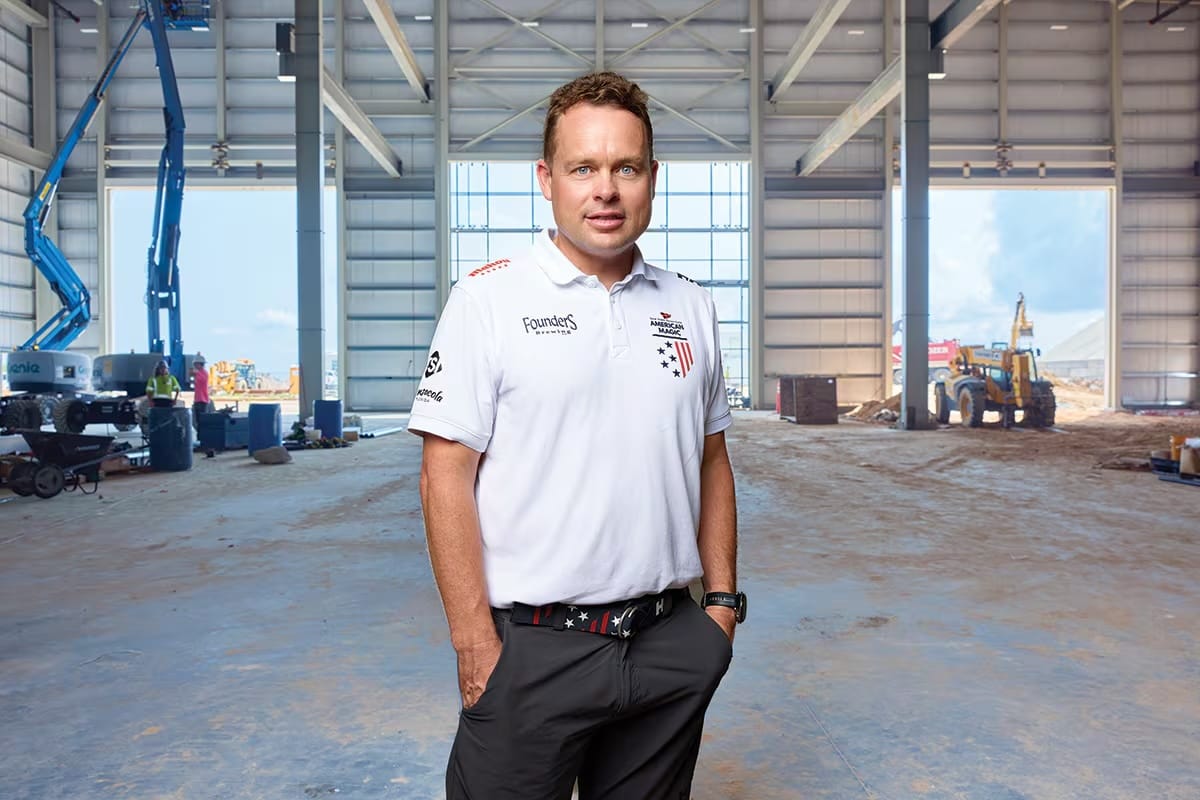
Whether American Magic will be amongst the list of challengers in the 38th edition of the America's Cup still remains to be seen, as there has been zero communication in recent weeks from the US team that is headed by billionaire businessman and keen sailor Doug DeVos.
In the meantime, however, it seems the syndicate is not letting the grass grow under its feet at its base in Pensacola, Florida.
According to these snippets from a story by Mike Vogel on the Florida Trend website – chief operating officer Tyson Lamond is busy driving forward a range of commercial projects aimed at delivering 150 new '150 high-wage jobs in advanced manufacturing, engineering and R&D" after benefitting from funds from the state-created Triumph Gulf Coast no-profit organisation and its $1.5-billion bankroll.
On a steamy July day at the port on Pensacola Bay, American Magic Chief Operating Officer Tyson Lamond begins a factory tour in an incongruously chilly room inside a much larger, 35,000-sq.-ft. warehouse. The room houses cockpit simulators for the world’s fastest racing sailboats, contenders for the legendary America’s Cup.
Winning the cup would be the pinnacle achievement for American Magic, but Lamond has a broader agenda in mind as he emerges into the heat and crosses into a building under construction that’s destined for manufacturing and storing 75-foot sailboats when they’re not tacking and jibing on the bay.
The new American Magic building, scheduled for completion in November, will be “transformational for our sport,” Lamond says in his Australian accent. “It’s about growing the sport of sailing,” and also the “manufacturing side of our sport.”
“I’m not talking just about boat building. I’m talking about the next generation of designers, the next generation of electronics technicians, hydraulics technicians, riggers.”
American Magic says it will create 150 high-wage jobs in advanced manufacturing, engineering and R&D at the site to make Pensacola “a leader on the world stage.”
American Magic was founded by Amway fortune heir Doug DeVos, car racing billionaire Roger Penske and Churchill Cos.’ John J. “Hap” Fauth. It represented the New York Yacht Club in the 36th America’s Cup competition in 2021 and 37th in 2024. American Magic wintered in 2021 and 2022 in Pensacola from its base in Newport, R.I., before its leadership decided to relocate the operation permanently to Pensacola. “Sailing in Pensacola Bay is perfect for our team,” Lamond says.
The team, says Mayor D.C. Reeves, is a “perfect fit” for Pensacola and its 55-acre downtown port that won’t ever have the scale to compete in cargo tonnage with Mobile, Ala., or Savannah, Ga. “It’s rare a city gets to plant its flag as the ultimate destination in the United States for any one thing,” Reeves says. “That our city of Pensacola can plant its flag as the ultimate destination in the United States for sailing is an amazing thing and an unprecedented thing.”
American Magic, Reeves says, will have a “catalytic impact” on the city as a hub for advanced manufacturing, maritime tech and maritime education. It’s already hosted regattas in the bay. The University of West Florida, working with the city, chose because of American Magic to lease a port warehouse site for a new water and vessel engineering program.
In August, Finland boat maker Nautor Swan announced it would move production of a new ClubSwan 28 boat line to Pensacola to collaborate with American Magic and together they would launch a racing series for the entry-level sports boat with six of the eight races in Pensacola Bay.
American Magic has until three years after construction is finished to deliver its 150 jobs. The project already has meant work for local contractors, such as general contractor Greenhut Construction. It’s also led to internships and jobs for students from Pensacola State College and UWF. But as of July, American Magic employed only 43. Lamond, the COO, says employment will grow to 120 to 140 once it occupies the new building in November.
It turns out American Magic, with its skill set in composites, aerodynamics and advanced manufacturing, has proved adept at contract manufacturing for aerospace. Lamond shows off a clean room where American Magic workers toil over something aerodynamic. What it is and who the client is, he won’t say. But it will go into space, he says.
Aerospace represented 90% of manufacturing operations in July, Lamond says. When marine manufacturing picks up in the new building, he expects the ratio to be around 60% aerospace and 40% marine. He’s talking with the port and city about taking more space.
Winning At The Bottom Mark
The Layline's Dan Self explains how to consistently gain 1-2 places at every bottom mark rounding.
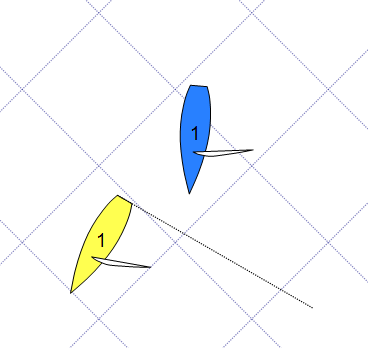
Gaining overlap at the bottom mark is an easy way to consistently pick up 1-2 places every downwind leg.
Most people sail downwind and wait until the final minute of the leg to think about their mark room situation and who has overlap.
The best sailors are working to establish their overlap early, and ensure they’re in a position to attack heading into the bottom mark.
In this article, I’ll break down the most important rules you need to be aware of downwind, and how you can use them to your advantage.
Let’s start off with the rules:
Proper course - A course a boat would choose in order to sail the course as quickly as possible in the absence of the other boats referred to in the rule using the term
- What this doesn’t mean: a straight line course to the next mark
- What this does mean: the fastest course considering things like wind, waves, current, optimal sailing angle for your boat type etc. In reality, proper course is up to the skipper, and unless you blatantly sail off the course, it’s hard to argue against what your proper course is.
Overlap - Two boats overlap when neither is clear astern
- Let’s first define clear astern: one boat is clear astern of another when her hull and equipment in normal position are behind a line abeam from the aftermost point of the other boat’s hull and equipment in normal position
- What this means: boats are overlapped when any part of the trailing boat is ahead of a line drawn from the back of the other boat.
Rule 17 - If a boat clear astern becomes overlapped within two of her hull lengths to leeward of a boat on the same tack, she shall not sail above her proper course while they remain on the same tack and overlapped within that distance.
- What this means: you can’t luff above proper course if you’re closely overtaking.
There are many other rules which apply in these situations, but these are the ones which I see most people misinterpreting. Now let’s take a look at 4 ways you can use these on the race course...
The storm that changed sailing
On the latest episode of the the RYA 150 Podcast, hosted by record-breaking British yachtswoman Dee Caffari...
The Fastnet Race is meant to be a test of skill and endurance - a prestigious offshore race on one of the sport's toughest courses. To this day, it remains a bucket list challenge for many. In 1979, it became a tragedy that reshaped safety at sea.
Iconic, tough and respected worldwide - the Fastnet Race is one of offshore racing's ultimate challenges. But in 1979, the race would go down in history for very different reasons.
Without modern forecasting or real-time updates, sailors encountered a violent storm that escalated far beyond expectations.
The fleet was overwhelmed, crews were stranded, and what began as a contest of seamanship became a fight for survival. Twenty-one lives were lost in the events that unfolded.
From stricken competitors anxiously awaiting rescue, to the RNLI crews racing into danger, this episode captures first-hand accounts of the efforts and the bravery shown on that night.
Featuring:
- Frances Reincke - a sailor who was rescued, sharing her personal story from inside the storm.
- Mark Gannon - Courtmacsherry RNLI crew member, recalling the 1979 call-out.
- Simon Rowell - Meteorologist, explaining the weather systems that built the tragedy and how forecasting and monitoring has evolved since.
- Richard Falk - RYA Director of Training & Qualifications, on how the lessons of 1979 transformed training, safety and seamanship.
Lessons for a safer future
How could so much go wrong so quickly? This episode explores what the Fastnet disaster revealed about preparedness, communication and seamanship in extreme conditions.
The inevitable review that followed reshaped sailing forever. From sea survival training to international race protocols, safety equipment and improved forecasting, the legacy of the Fastnet disaster lives on in safety measures we continue to rely on today and that have helped avert disasters of a similar scale since.
A lot of boat for the price?
It might be just us, but doesn't this ad for a VO65 on the Berthon International website look like a lot of boat for the asking price?
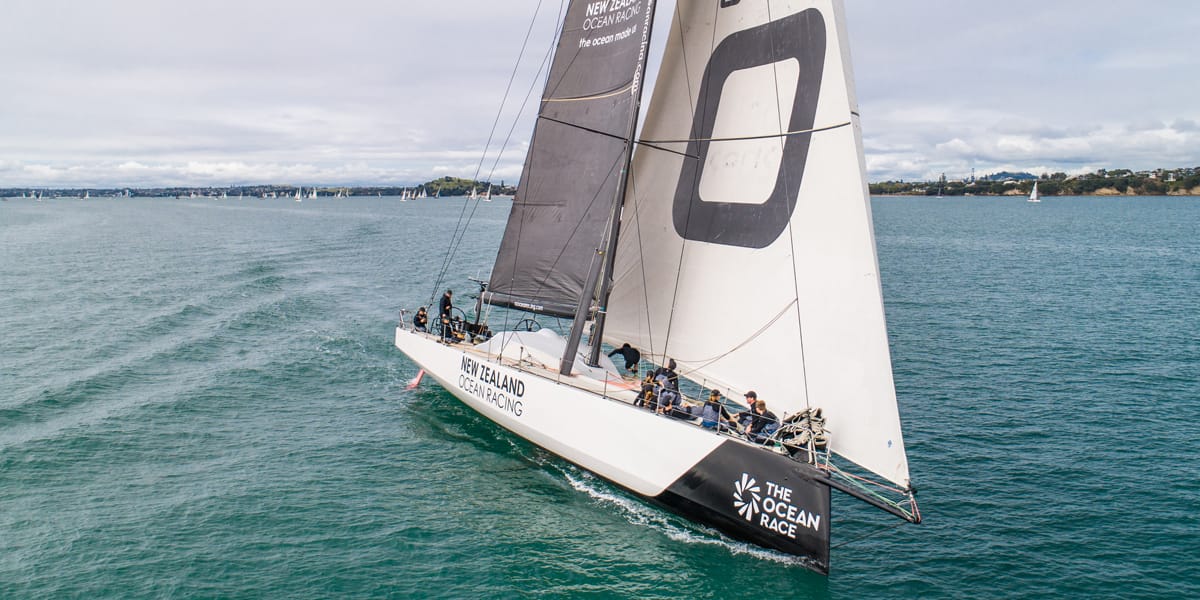
Volvo Ocean 65 – €350,000
The Volvo Ocean 65 is an iconic ocean greyhound. Conceived especially for the Volvo Ocean Race, with a brief following a downturn of entries from the spiraling costs of the Volvo 70 – a study was undertaken to provide a one-design class to keep costs down and provide a close and entertaining race for the public to follow.
Farr Yachts’ design produced a yacht that was capable of being just 2.7% slower than the Volvo 70 class, but significantly more robust, and designed with more protection for the crew. In fact, the Volvo 65 holds the Volvo Ocean Race 24 hour distance record, a testament to the strong build and excellent design of the yacht.
Volvo Ocean 65 NO6 has competed in the race a few times, originally as VESTAS and TURN THE TIDE ON PLASTIC. Now available from the new owners for the next race and beyond, she comes as a complete package with support containers.
Transat Café L’OR: Thomas Ruyant of France aims for a three-peat in the IMOCA Class
The Transat Café L’OR from Le Havre to Martinique, which forms the finale of the 2025 IMOCA season, is now just 12 days away and it’s a classic course that has attracted a stellar field – writes Ed Gorman.
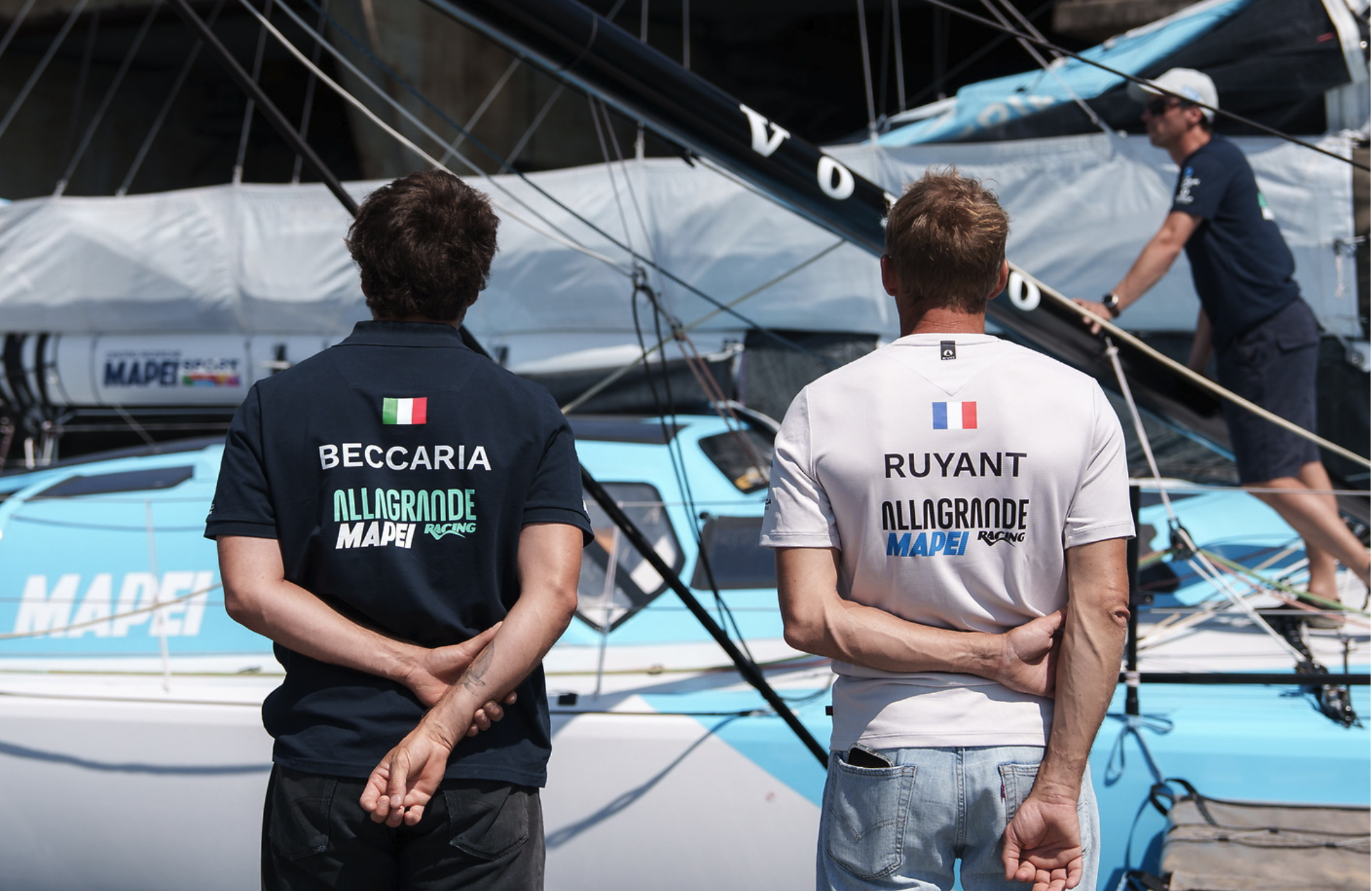
There will be 18 two-handed IMOCAs on the startline on October 26 facing a 4,350-nautical mile sprint across the Atlantic, and among them are many of the top performing skippers and boats of the last three years.
They include the IMOCA Globe Series leader Sam Goodchild sailing with Loïs Berrehar on MACIF Santé Prévoyance, Elodie Bonafous and Yann Eliès on Association Petits Princes-Quéguiner, Yoann Richomme and Corentin Horeau on Paprec Arkéa, and Jérémie Beyou and Morgan Lagravière on board Charal.
On their day, any of those pairings could win the 17th edition of this, the most famous two-handed transatlantic of them all which was formerly known as the Transat Jacques Vabre (TJV). But standing in their way will be the formidable presence of the 44-year-old Frenchman Thomas Ruyant, who is sailing with the Italian skipper Ambrogio Beccaria on board Allagrande MAPEI Racing.
The Transat Café l’OR will be Ruyant’s last race on board his old Koch/Finot-Conq boat (formerly Vulnerable) before he hands it over to Beccaria, and there is nothing Ruyant would like more than to win this contest in which he has a remarkable record.
Sailing with Lagravière, Ruyant won it in 2021 on board LinkedOut. Then, after winning the solo Route du Rhum the following year, Ruyant returned to the Transat Jacques Vabre in 2023 and won it again with Lagraviére, this time on board For People. Now the two-time Vendée Globe top-10 finisher is eyeing an unprecedented “three-peat” in the Transat Café L’OR alongside Beccaria, with whom he sailed in both the Course des Caps and The Ocean Race Europe.
“I’m pretty convinced that we make a really, really good pair to go for a third victory,” Ruyant told the Class this week, as he prepared to deliver the boat to Le Havre for the start. “We’ve got quite a few miles together and we’re starting to really find each other, to understand one another and to grasp each other’s strengths. And that’s what we’re going to rely on for this transat.”
The quality in Beccari – known as Bogi – that Ruyant highlights is his competitive intensity and in this race, he believes, winning is all about applying a relentless work ethic to what is a full-on sprint from one side of the Atlantic to the other.
“I love the feeling Bogi has,” explained Ruyant. “He’s an excellent helmsman, a great trimmer and he brings a huge amount of energy on board. That’s the key in the end, on a transat or shorter races: to have that level of intensity that we already had with Morgan. And now I feel it again, with someone who has such a strong personality and so much commitment.”
This pairing has not had the easiest time this season. They retired with mast damage from the Course des Caps while in contention for the podium, and then fought back to score a leg win in The Ocean Race Europe after a collision at the start of that race. But Ruyant believes these experiences have toughened his partnership with Beccaria and strengthened the team overall.
“I know we’ve got a very good boat for this race – the right team, a good boat,” he said. “We’ve sailed a lot this year, even if the results haven’t been that conclusive. In our projections, we expected to do a bit better but, at the same time, we also showed that the team knows how to bounce back…so we’re full of confidence going into the Transat.”
This year’s Transat Café L’OR fleet will be dominated by the latest foiling designs at the front end. But it also includes five daggerboard boats, among them the fastest hull in this division, the old VPLP-Verdier-designed MACIF from 2010, now being raced under the Café Joyeux colours by Nico D’Estais and Simon Koster.
Among those taking them on will be the New Zealand-American skipper Conrad Colman sailing with Mathieu Blanchard on board MSIG Europe, another well-travelled VPLP-Verdier design from 2007. Now this pairing is quite something because the 37-year-old French-Canadian Blanchard is an ultra-trail runner with very little sailing experience other than a couple of weeks training with Colman in the build-up to this race.
But Colman is relishing the chance to share the transatlantic challenge with a newcomer and to learn from Blanchard’s own athletic career, which will continue in Martinique where he will run the 134-kilometre TransMartinique trail run once he gets there.
In this venture, Colman is taking on a big responsibility because he will not be able to rely on Blanchard to sail the boat on his own. “It’s exciting, it’s challenging,” said the sailor who has completed two Vendée Globes without using fossil fuels, “because it’s me running a double-handed campaign essentially solo because Mathieu doesn’t have the expertise that will allow me to split the job list or share the responsibility.”
But Colman loves nothing more than a seemingly impossible challenge. “It’s quite exciting actually,” he added. “It’s cool to be able to sail with somebody who is so capable and such an expert in another discipline and the goal is not to put him on the back foot, but to show him a new experience – that’s quite cool.”
Added to his lack of experience, Blanchard is vulnerable to sea-sickness and Colman has warned him that the first few days of the Transat Cafe L’OR may well feature a rough and violent ride towards Cape Finisterre and beyond. “I’m prepared and actually fully expecting it to be blowing a hoolie coming out of the Channel. And I’ve been telling Mathieu to be careful buddy because the first three or four days are potentially going to be pretty rock and roll,” said Colman.
“So it’s going to be complex, but you don’t grow by doing the same thing that you’ve always done, both for him and for me. So I’m excited by the challenge and the opportunity to do things differently and he’s up for the ride,” he added.
Quiz Question...
What does the acronym IMOCA stand for?
Answer in the next newsletter...
Monday's answer: In the Racing Rules of Sailing the rule number that dictates that a boat on port must keep clear of a boat on starboard in Rule 10.
Download your own PDF copy of the rules here.


